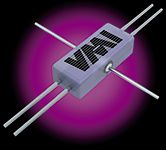Voltage Multipliers Inc
Company Description
VMI manufactures high voltage diodes, opto-couplers, optodiodes, voltage multipliers, rectifiers, and power supplies.
Commercial and military grades are available.

Need a high voltage, custom design? VMI assists you in product development from the design stage through production manufacturing. Our services include extensive testing, design verification, production support, and custom design support.
VMI is ISO9001:2008 certified.
Chief Spectroscopic Techniques Supported
- Mass Spectrometry
- Optical Isolation
- Instrumentation
Markets Served
VMI provides high voltage components and assemblies to the medical field, oil exploration, industrial agriculture, military, and aerospace markets.
Major Products/Services
VMI manufactures high voltage diodes (2 kV to 20 kV), optocouplers (2.5 kV to 25 kV), SMD multipliers (up to 14 kV), recitifiers (up to 45 kV), and power supplies (to 125 kV).
Our services include extensive testing, design verification, production support, and custom design support.
We simplify the design process by providing easy access to our engineers, technical team, and sales team.Technical conversations are easy-our engineers and sales representatives are just a phone call away.
I9001:2008 certified.
Facility
44,000 sq. ft. in Visalia, CA USA
34,000 sq. ft. manufacturing 10,000 sq. ft. office
All manufacturing activities, from wafer doping, diffusion, metallization, to pcb assembly, encapsulation, and testing, are performed on-site, in Visalia, CA .

Voltage Multipliers Inc.
8711 W. Roosevelt Ave.,
Visalia CA 93291
TELEPHONE
(559) 651-1402
FAX
(559) 651-0740
WEB SITE
NUMBER OF EMPLOYEES
230
YEAR FOUNDED
1980

Best of the Week: AI and IoT for Pollution Monitoring, High Speed Laser MS
April 25th 2025Top articles published this week include a preview of our upcoming content series for National Space Day, a news story about air quality monitoring, and an announcement from Metrohm about their new Midwest office.
LIBS Illuminates the Hidden Health Risks of Indoor Welding and Soldering
April 23rd 2025A new dual-spectroscopy approach reveals real-time pollution threats in indoor workspaces. Chinese researchers have pioneered the use of laser-induced breakdown spectroscopy (LIBS) and aerosol mass spectrometry to uncover and monitor harmful heavy metal and dust emissions from soldering and welding in real-time. These complementary tools offer a fast, accurate means to evaluate air quality threats in industrial and indoor environments—where people spend most of their time.